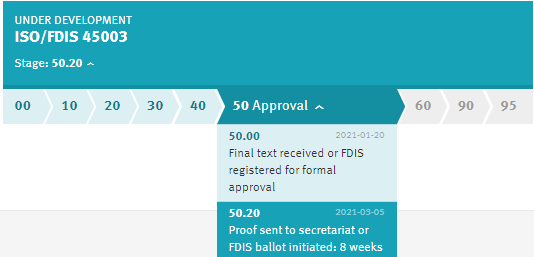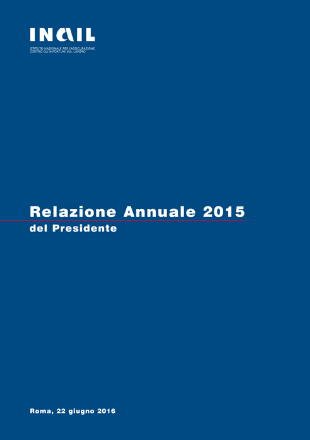Informazione tecnica HSE / 25 ° anno
/ Documenti disponibili:
45.602
/ Documenti scaricati: 34.540.999
/ Documenti scaricati: 34.540.999
ISO 45003:2021
Pubblicata da ISO Giugno 2021 la norma ISO 45003:2021 Occupational health and safety management — Psychological health and safety at work — Guidelines for managing psychosocial risks
ISO/FDIS 45003: 2020 Occupational health and safety management - Psychological health and safety at work - Guidelines for managing psychosocial risks
Preview ISO/FDIS 45003:2020 attached
This document gives guidelines for managing psychosocial risk within an occupational health and safety (OH&S) management system based on ISO 45001.
It enables organizations to prevent work-related injury and ill health of their workers and other interested parties, and to promote well-being at work.
It is applicable to organizations of all sizes and in all sectors, for the development, implementation, maintenance and continual improvement of healthy and safe workplaces.
NOTE When the term "worker" is used in this document, worker representatives, where they exist, are always implied.
_____
Publication Date: 5 March 2021
Status: Active
The new standard provides guidance on how organisations can manage workplace psychological risk by identifying the primary risk factors and determining what would improve the working environment.
ISO 45003 provides guidance on the following:
Specifically, Clause 6.1 of the draft ISO 45003 standard indicates that organisations should identify hazards of a psychosocial nature including:
- Aspects of how work is organized (e.g. job control, job demands, work pace, etc.)
- Social factors at work (e.g. work-life balance, bullying, harassment, etc.)
- Work environment, equipment and hazardous tasks
The draft standard provides plenty of more examples and detail of the above types of psychosocial hazards. It also gives guidance on how to identify and assess these psychosocial risks. The standard also addresses support issues including a specific clause on confidentiality of personal information.
...
Fonte: ISO
Collegati

ROMA, 22 Giugno 2016
I dati sono stati presentati oggi, a Roma, presso la Sala della Regina di Montecitorio, dal presidente Massim...

Infortunio con un tornio. Il comportamento di un lavoratore chiamato ad utilizzare un macchinario senza essere stato preventivamente formato non p...

ID 18537 | 02.01.2023 / In allegato Dispense / Materiale didattico
Dispense / Materiale didatti...
Testata editoriale iscritta al n. 22/2024 del registro periodici della cancelleria del Tribunale di Perugia in data 19.11.2024